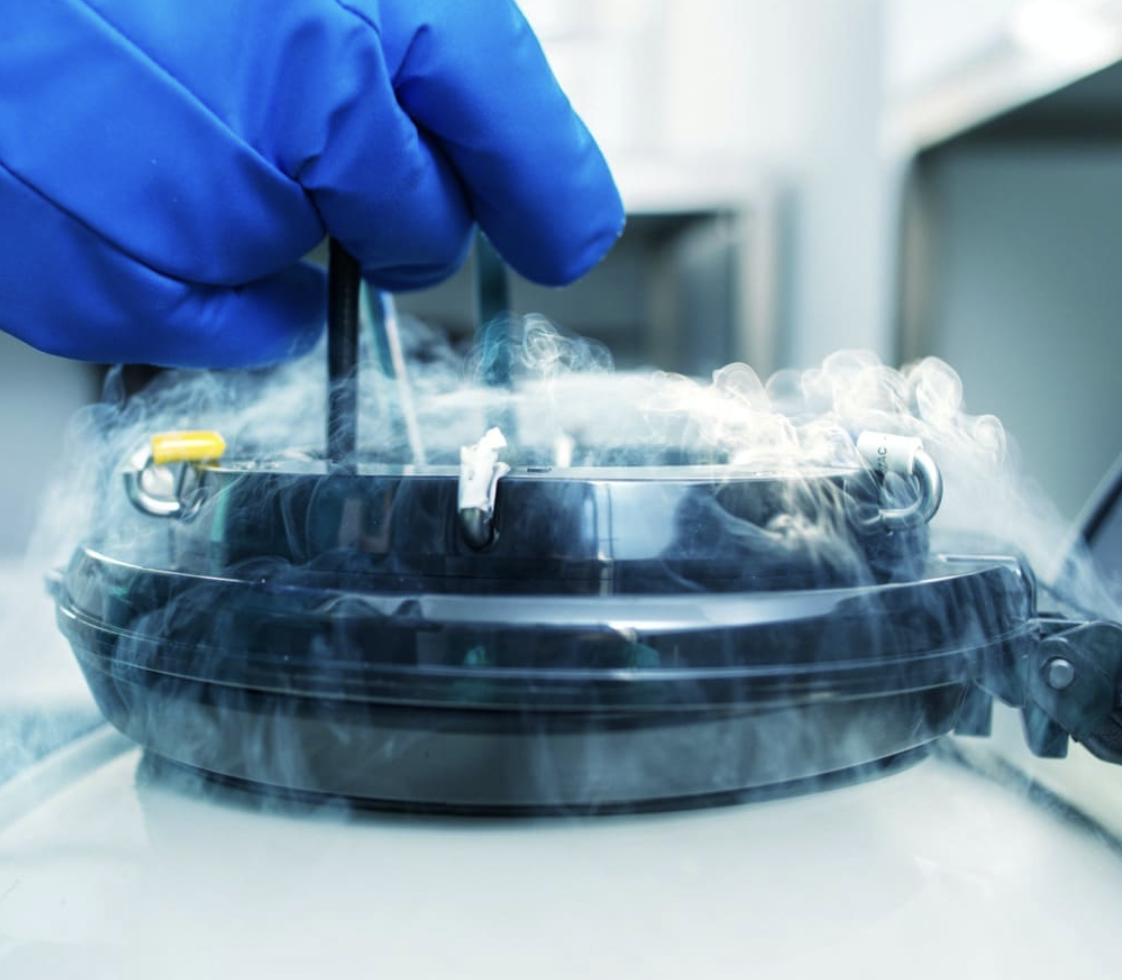Conservation of embryos, oocytes and ovarian tissue freezing
Maintaining embryos in cryopreservation allows couples to use surplus embryos in the future. This is expected to increase pregnancy rates per single treatment cycle, as it enables the woman to make repeated embryo transfers with the least possible financial and emotional cost and medical intervention.
Thus, when many eggs are taken and fertilised, if the couple wishes, surplus embryos may be frozen. These can be kept in cryopreservation and used for embryo transfer in a future natural cycle, without the need for medication.
The human embryo is frozen successfully, either at the pronuclear stage (zygote) or after cell division, or even as a blastocyst. Human embryos can be frozen with two different freezing protocols:- the classical slow freezing protocol with propanediol and sucrose for embryos and glycerol for blastocysts as cryoprotectant solutions
- the vitrification method, widely used for freezing embryos in all stages, and for freezing oocytes with very high survival rates
This technique is completely different from the previous one,as its key principle is using cryoprotectant solutions at very high concentrations and keeping embryos in them for a few seconds to 3 minutes .
Until recently, efforts to freeze oocytes with the slow protocol remained one of the biggest weaknesses of assisted reproduction, as survival rates were much lower than those of cryopreserved-thawed embryos. However, today, the vitrification technique has revolutionised the field of frozen human gametes and promises high survival, fertilisation and pregnancy rates.
At "GENESIS ATHENS", ovarian tissue may also be cryopreserved if necessary used to achieve the production of eggs, fertilisation and embryo transfer.
Embryos and oocytes are preserved in liquid nitrogen at -196°C and remain unchanged for a long time. With current technology, 90- 95% of embryos survive thawing. The probability of success after transfer of thawed embryos is almost the same as the that after embryo transfer of non-frozen embryos.
Internationally, studies to date indicate that foetal abnormality rates in embryos derived from thawed embryo transfer do not differ from those of IVF, or natural conception.

Source: https://www.genesisathens.gr/en/
© 2025 IVF counseling and assistance service | All Rights Reserved
